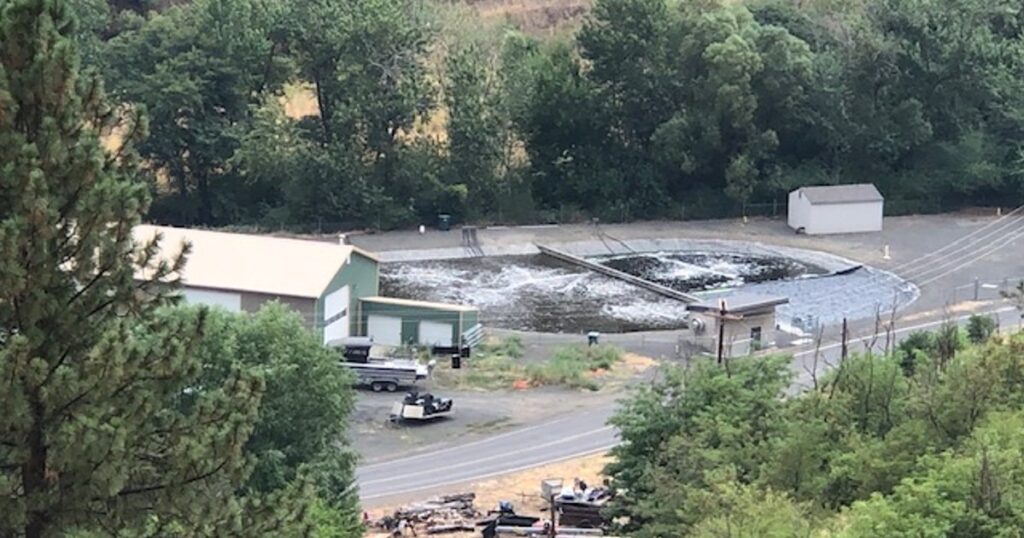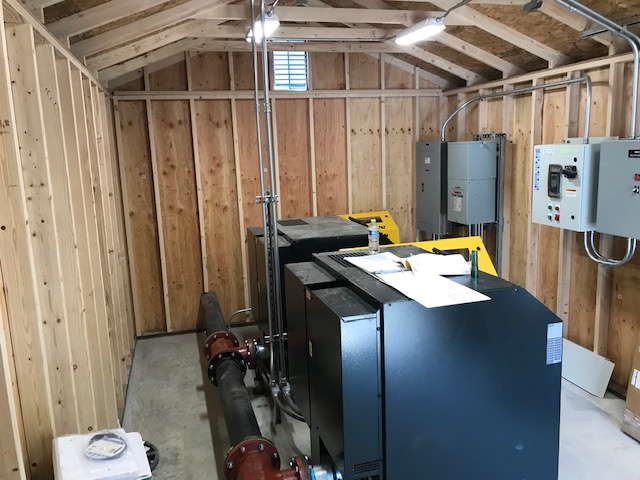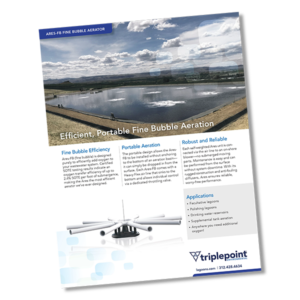
Facing the unexpected overhaul of its wastewater plant, the Town of White Bird, Idaho, found a beautiful, hands-off solution in Triplepoint
White Bird, Idaho, is a small town—population 91—with a big story. The town gets its name from Chief White Bird, a member of the Nez Perce Indian tribe who handed the U.S. Army a significant defeat in 1877 in the Battle of White Bird Canyon, the first fight in the Nez Perce War.
Seventy years prior to that, Captain Meriwether Lewis and his second Lieutenant William Clark crossed the Salmon River near White Bird. The pair was on the famed expedition to explore the Pacific Northwest at the behest of then-President Thomas Jefferson.
Today, the natural beauty of White Bird continues to attract travelers for sightseeing, fishing and hunting, camping, whitewater rafting, swimming, and a host of other sports. Protecting the natural resources is critical to the local economy. Which is why, when a major problem was detected with its wastewater treatment lagoon facility, a solution was a top priority not just for White Bird but for the entire State of Idaho.
Aging Plant, Part-time Staff, No Budget
Like many small communities across Idaho, White Bird built its wastewater lagoon facility in the 1970s. It was built as a treatment facility to infiltrate the treated water into the ground. The plant’s 15-foot-deep lagoon was equipped with large bubble surface aerators to break down solids. The flow rate was approximately 30,000 gallons a day.
Staffing the facility has always been a challenge. Small towns in Idaho like White Bird typically have one person responsible for all community services, from plowing snow, digging graves, and catching stray dogs to running the water and wastewater systems.
In recent years, White Bird was lucky. They had a treatment plant operator. However, he lived 40 miles away. He came twice a month to do the discharge monitoring report and check on things. If the plant required maintenance between visits—and it did—that was an issue. And with the aging surface aerators, there was a backlog of maintenance to be done and few resources to address needed upgrades.
White Bird had another issue. In addition to their system being past the breaking point, an environmental group determined they were discharging effluent into White Bird Creek and threatened a lawsuit.
Sorting Out a Critically Needed Solution
In 2018, Stuart Hurley, a consulting engineer and principal with Mountain Waterworks in Boise, was engaged to help White Bird with a critically needed solution. Hurley, who specializes in process treatment design, has focused his career on water and wastewater projects for more than two decades. Researching the White Bird facility’s history, he determined they had been operating since the mid 1970s without a discharge permit.
“I’ve never experienced anything like this in my career,” Hurley says. “White Bird had a draft EPA permit from 1974 but it was never issued. Now White Bird had to upgrade the facility not just to replace aging infrastructure and inefficient aeration equipment, they also had to secure a permit, meet anticipated permit limits and proactively address potential issues with ammonia. The Idaho Department of Environmental Quality (DEQ) is very strict about the state’s wastewater facilities so any solution we came up with had to meet present and future needs.”
Hurley recommended that White Bird do a system-wide upgrade, which basically required rebuilding the facility from the lagoons up. During an assessment, it was determined that the lagoons were leaking, and the integrity of the liners needed to be restored. Because White Bird had no existing budget for the project, Hurley advised the town to lean heavily on available state and federal dollars.
“We were fortunate to secure funding from multiple sources: the Department of Environmental Quality’s Revolving Fund Program, a State Department of Commerce Community Block Grant, and the U.S. Army Corps of Engineers Walla Walla District,” Hurley says.
With the goal of upgrading and optimizing White Bird’s wastewater lagoon facility, it was now time to construct the improvements.
The Case for Triplepoint
Triplepoint is a wastewater lagoon expert known for its practical, hands-on approach when solving regulatory compliance and nuisance issues. Since its founding over 15 years ago, Triplepoint has partnered with scores of small to mid-sized communities across North America to deploy innovative lagoon technologies that leverage existing infrastructure to ease the financial burden of upgrades while reinventing lagoons to meet effluent limits. Their technology was ultimately selected as the lowest bid and best solution for the White Bird project.
“When we met with Stuart Hurley and town officials, they had three critical requirements. They wanted the new aeration system to be simple to operate, low maintenance, and capable of expanding to meet increase flow or more stringent discharge and ammonia limits,” explains Tom Daugherty, Triplepoint’s western states sales representative. “We were down for that.”
Based on White Bird’s daily flow rate of 30,000 gallons, Daugherty recommended 10 of Triplepoint’s Ares-FB fine bubble diffusers. Unlike the facility’s old aerators, which floated on the surface of the lagoons, the Triplepoint diffusers are installed on the floor of the lagoon, secured by heavy flex aeration tubing. “These diffusers are highly efficient, with an area of influence of up to 125 feet in diameter,” Daugherty says. “They also weigh less than 130 pounds so they’re easy to handle for servicing or repositioning.”
He adds, “As White Bird grows and its daily flow increase, it’s very simple to install additional diffusers.”

The system includes two Kaiser 15 hp positive displacement blowers that are housed in a site-built shed. To support automated, hands-off operation, Triplepoint included a NEMA 3R panel with VFD by Woodhawk Controls. “We like this panel because it supports remote monitoring and provides system alerts, functions important to operators who aren’t typically onsite,” Daugherty says.
White Bird's lagoon facility today
Design Flow Rate: 30,000 gallons per day
Blowers: 2 Kaeser 15HP positive displacement blowers
Controls: NEMA 3R Panel with VFD by Woodhawk Controls
Aerators: 10 Triplepoint Ares-FB fine bubble diffusers
White Bird’s lagoon makeover included rebuilding the lagoons, removing decades of sludge, and replacing the liners. Once completed, the new Triplepoint system was installed. Three years later, the White Bird wastewater treatment facility is performing very well and meeting all regulatory requirements.
Commenting on the system, Hurley says, “White Bird now has a fully optimized wastewater treatment facility with a complete mixed environment. Triplepoint’s fine bubble diffusers are very effective at air transfer. Operation is easy and very little maintenance is required. This is a major plus for White Bird town officials who no longer have the worry of maintaining an outdated system and the issues it can create.”
He adds, “I’m also pleased to report that White Bird has its EPA permit and is well positioned for future regulatory changes.”
Download the Ares-FB brochure
Efficiently add oxygen without mixing.


